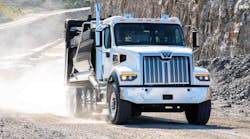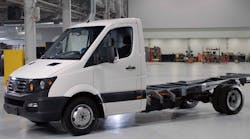While much of the alternative-fuels technology—including EV—is focused on the light- and medium-duty market, attention is turning to the Class 8 market.
ACT is offering a free fuel calculator to compute a fleet’s specific potential savings (http://calc.actresearch.net/).
“The CRWPT (cost-range-weight-performance-time) approach can be used to analyze the value proposition of alternative fuel use. For example, in transit buses – a segment where natural gas and EV technologies are competing currently, the economic cost, excluding intangible values like sustainability initiatives, depends upon a wide range of variables,” according to Steve Tam, ACT’s Vice President.
Three of the most influential variables are fuel prices, trade cycles, and regulations and incentives.
The shortest payback is often achieved where the fuel savings is greatest. Since more fuel used equals more potential savings, HD trucks and tractors are considered the prize market. However, the typical Class 8 tractor has a trade cycle of around five years. Other applications, like transit buses, have much longer cycles, making these segments better candidates for conversion to alternative fuels when the price differential between diesel and an alternative fuel is wider, as it currently is.
This, however, also creates a different purchase/replacement pattern. And while intangibles like sustainability are excluded from the CRWPT analysis, regulations and incentives are not because requirements to reduce or eliminate air pollution in some areas are not an option, regardless of the cost, and incentives to support those mandates will change a fleet’s cost analysis.








